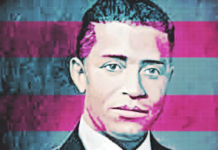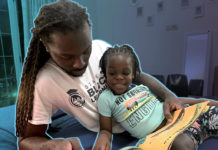Lately, I’ve had days where it’s been hard to get out of bed. I’ve had days where simply showing up for others has felt like an insurmountable task. I know what my mission is as an anti-bias, anti-racist (ABAR) educator but that doesn’t mean I always have the energy to do the work. I know I’m not alone when I say the following:
- Liberatory education work is HARD!
- ABAR work is emotionally and psychologically burdensome (especially as a Black male educator)
- The fight for liberation and justice cannot be done alone.
To be honest, there are times when I feel like an NBA player who is gasping for air and looking towards the sideline, hoping that a teammate comes off the bench to enter the game and give me a breather. I want to stay in the game, but I’m wise enough to know when I need to create space for my teammates to step up because I’m mentally, physically, and emotionally unable to keep going.
I’m wise enough to know when I need to create space for my teammates to step up because I’m mentally, physically, and emotionally unable to keep going.
Over the past few years, a number of NBA teams have been engaging in load management practices in order to keep their star players fresh and healthy for an entire season. By adopting these practices, many teams believe that players will have an increased chance of preventing chronic fatigue, which can negatively impact their performance on the court. Although the practice of load management has been frowned upon by several older generation players and legends within the NBA community, the reality is that there have been many cases where this practice has proven to be successful.
The most popular case of load management success, without question, is that of NBA All-Star Kawhi Leonard. To address Leonard’s chronic injury history, the Toronto Raptors placed him on a load management plan that required him to not play back-to-back games. In his lone season with the Raptors, Leonard ended up missing 22 games and still led the team to their first-ever NBA title. What’s even more impressive is that the Raptors won 17 of the 22 games that Leonard missed because the other players on the team stepped up to the challenge! Every night, it was a different player who rose to the challenge and filled the void that Leonard left. Even though Leonard was the team’s best player, those other players understood that it would take an ultimate team effort and a “Next Man Up” mentality to become NBA champions.
More often than not, this important work is being spearheaded and centered by educators and activists from historically marginalized communities such as BIPOC and LGBTQ+.
So that’s a glimpse of how load management works in the NBA. Now, how does this concept of load management fit into our necessary work as ABAR educators? Before we can even answer that question, it’s important for us to identify who is doing the heavy lifting when it comes to engaging in ABAR education work. More often than not, this important work is being spearheaded and centered by educators and activists from historically marginalized communities such as BIPOC and LGBTQ+.
When you think about it, it makes perfect sense that the individuals who come from the most marginalized and dehumanized communities would be the most active in this ABAR movement. Since white dominant culture has always informed our society, white educators have always had the luxury of being idle or inactive in the fights against racism and homophobia. It is for this very reason that many BIPOC educators, like myself, experience recurring bouts of racial battle fatigue.
Too often, we find ourselves simply doing the absolute most because we struggle to enlist colleagues and other staff members to help alleviate the heavy burden of ABAR work that we shoulder. In the past, the reluctance of many of my white teaching colleagues to engage as co-conspirators in this work greatly contributed to my teacher burnout. I didn’t have a team behind me. I felt alone, isolated, and, at times, ostracized for speaking out against the inequities and racist acts that I was witnessing within my school community.
If liberation and justice for our students is truly the goal, then practicing load management has to be a part of our playbook as ABAR educators.
Given the current racial and sociopolitical climate we’re in, the need to engage in ABAR work as a collective is more imperative than it has ever been. We cannot fight this battle alone. Operating in this work as individuals only helps to perpetuate the cycle of white supremacy culture that exists within our education system. If liberation and justice for our students is truly the goal, then practicing load management has to be a part of our playbook as ABAR educators.
How can we maintain our stamina for this work if we are unable to get subbed out of the game to get a breather? Unlike the NBA, there is no end to our season. In other words, our season is our lifetime because that’s how long we must stay committed to and be intentional about combating the forces of oppression that prevail within our school systems and beyond. Liberation and justice will not occur if we don’t adopt load management as a universal practice in our work as an ABAR educator community.
In closing, I ask that you take some time to reflect on the following question:
Who are those teammates you lean on to give you a breather from this fight for liberation and justice?
If you’re struggling to answer that question, then my advice for you is to be in community with other ABAR educators so you achieve longevity and maintain your fire for this work! Why carry the load when you can easily share it with others?










